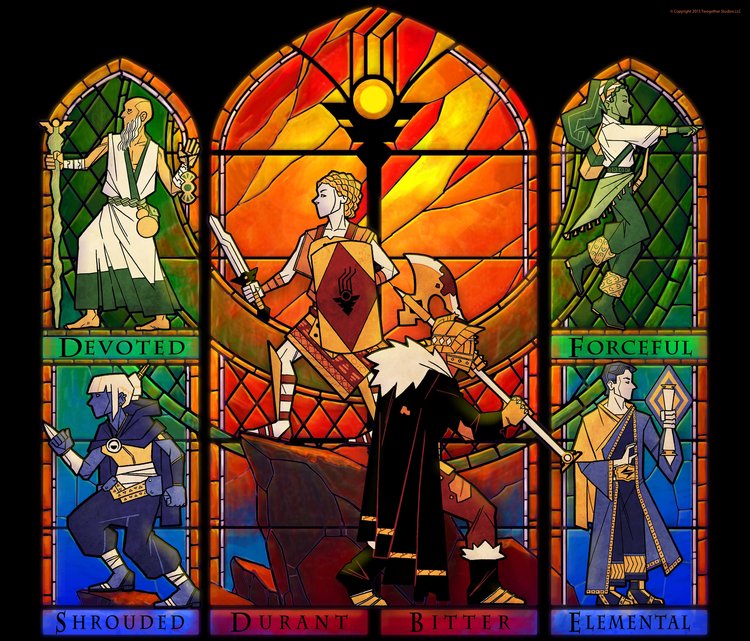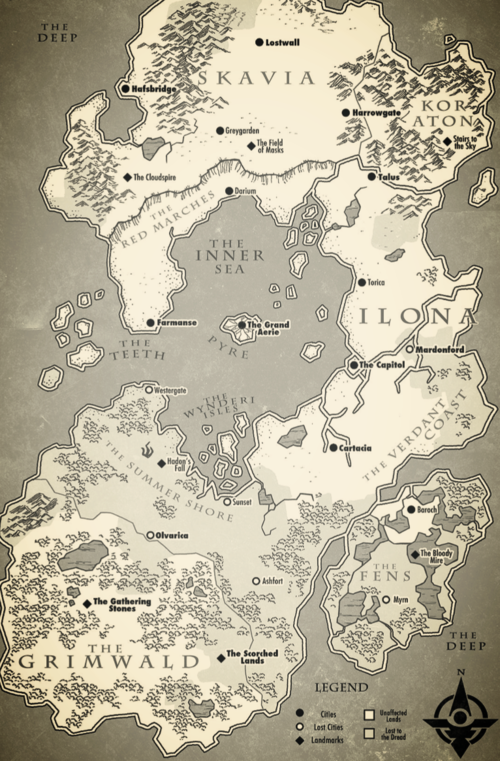It has many of the features of classic roleplaying with a couple of interesting twists. First actions including combat are resolved with a custom set of cards. Secondly one levels up by dying first.
The main mechanic for resolving things is a comparison of the total of up to three cards from a hand of five against a target number. There are three suits Strenght, Grace, and Intellect, each players deck will only have two suits Grace and either Strenght or Intellect dependant on their character class. A starting deck consists of two each of cards valued 2, 3, and 4 from each of their suits, and five special cards from their character class (nominally valued 1, but usually adding +5 when its special conditions are met). Since success normally requires a total value of 10 or better, succeeding with only three cards often requires meeting special conditions. The players have a number of other tricks (including adding their life force, known as sparks) to up their score. Another interesting feature is that cards are only redrawn at the start of the next round, so making a strong attack can leave you with only low-value cards to defend against enemy attacks. Conversely, a strong defense may make mounting a successful attack not possible. For the most part, I think the card mechanic will work well although calculating the odds of success is tricky.
There are six character classes, three strength based ones (Bitter, Durant, Forceful) and three intellect based ones (Devoted, Elemental, and Shrouded). Each party (referred to in the game as a wing) can have only one member from a specific character class. There are only enough cards for four players two from the strength group and two from the intellect group.
Now for the leveling up by dying. The conceit of this game is the players are guardian spirits rather than mortals, having died prior to the start of the game and found themselves awakened in an Aerie of the Phoenix Dawn Command, an organization dedicated to the protection of humanity. After they die during the game they will resurrect again in the Aerie with more sparks, heath levels and get to add a new school card and one value 5 card. Every odd level you can remove one low-value card from your deck. However after seven levels when you die you are dead for good.
As well as the core mechanics the book contains a monster guide and seven scenarios. the monsters (about 12 of them) are presented first but really make more sense within the context of the scenarios. Many are unkillable via physical combat (ssh, don't tell your players that just yet). The seven scenarios are marvelous and in many ways the best part of the book. Most of them cannot be successfully navigated by brute force alone (enhancing a sense of horror absent from most conventional roleplaying) and will probably require the sacrificial death of one or more of the party to obtain the optimum outcome. I'll not spoil the surprise by discussing the scenarios any further.
Overall I found the game an enjoyable read. I didn't like that the starting deck description is hidden in the "Tools for the Marshall" chapter rather than the "How to Play" chapter. There is no index which would have been helpful, even though there is a good table of content. I look forward to trying to lure four players into a one-off campaign through the provided scenarios. Unfortunately, I think the rules presented are a little too complex and foreign for me to feel comfortable writing my own material for this system (although Ken does provide some good tips for additional adventures in the monster and scenario section). I do not see the potential for a long-running campaign with this rules set given the level cap of seven, and the limited selection of character classes. Perhaps I am in a rut, but for D&D I can put together three fights and a trap for an evenings entertainment with only an hour or two of prep time, doing something in this system would take me far longer. I am hopeful Ken will keep tinkering with this and provide some more scenarios of the same quality these first ones. Expansions to the broaden the play would also be welcome (already extra intellect and strength cards are available through Drivethrurpg allowing for a fifth and sixth player).




No comments:
Post a Comment